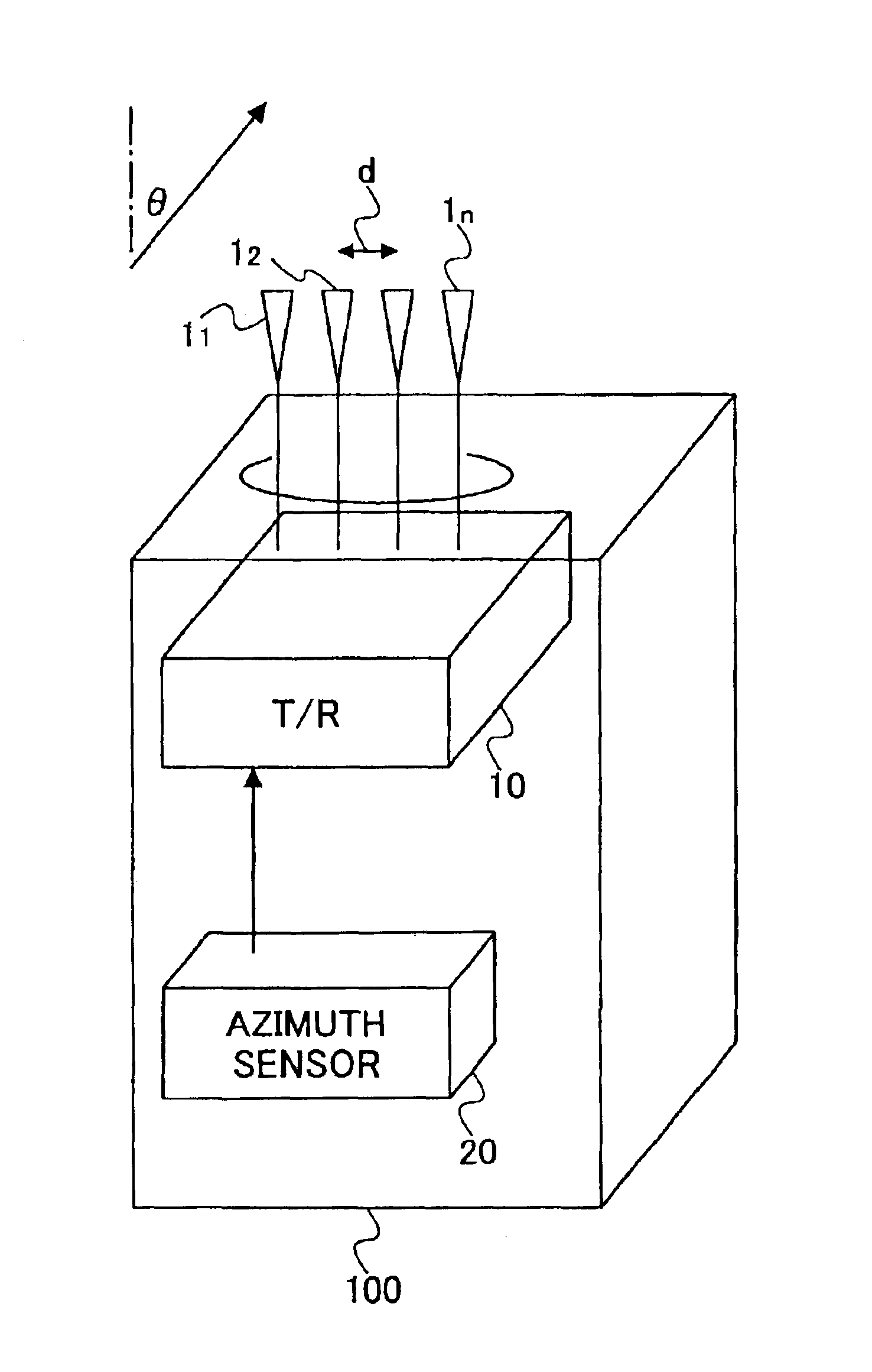Adaptive antenna unit for mobile terminal
a mobile terminal and adaptive technology, applied in the direction of antennas, antenna details, substation equipment, etc., can solve the problems of increasing radio wave propagation loss, difficulty in increasing the cell diameter, and no longer being able to realize a mobile communication system
- Summary
- Abstract
- Description
- Claims
- Application Information
AI Technical Summary
Benefits of technology
Problems solved by technology
Method used
Image
Examples
first embodiment
[0048]FIG. 6 is a diagram showing a basic structure of an adaptive antenna unit according to the present invention. The adaptive antenna unit is applied to a mobile terminal (or mobile station) 100 and includes an array antenna which is made up of a plurality of antenna elements 11 through 1n, a transmitter-receiver section 10 which has a function of controlling a directivity of the array antenna, and an azimuth sensor 20 which detects an azimuth or inclination of the mobile terminal. In this embodiment, the antenna elements 11 through 1n are arranged linearly on the same plane.
second embodiment
[0049]FIG. 7 is a diagram showing a basic structure of the adaptive antenna unit according to the present invention. In FIG. 7, those parts which are the same as those corresponding parts in FIG. 6 are designated by the same reference numerals, and a description thereof will be omitted. In this embodiment, the antenna elements 11 through 1n of a mobile terminal 101 are arranged in an arc, so that a beam is more easily formed within the plane in which the antenna elements 11 through 1n are arranged when compared to the arrangement shown in FIG. 1.
[0050]Of course, the number of antenna elements is not limited to four in each of the first and second embodiments shown in FIGS. 6 and 7, and the number of antenna elements may be set to an arbitrary number greater than or equal to two.
[0051]By giving a phase weighting with respect to each of the antenna elements 11 through 1n which is different for the transmission and the reception, it is possible to arbitrarily control the directivity of...
third embodiment
[0058]FIG. 8 is a diagram showing a basic structure of the adaptive antenna unit according to the present invention. The adaptive antenna unit is applied to a mobile terminal 102 and includes an array antenna which is made up of m×n planar antenna elements 111,1 through 11m,n, a transmitter-receiver section 10 which has a function of controlling a directivity of the array antenna, and an azimuth sensor 20 which detects an azimuth or inclination of the mobile terminal. In this embodiment, the planar antenna elements 111,1 through 11m,n are arranged in a matrix arrangement on the same plane.
PUM
 Login to View More
Login to View More Abstract
Description
Claims
Application Information
 Login to View More
Login to View More - R&D
- Intellectual Property
- Life Sciences
- Materials
- Tech Scout
- Unparalleled Data Quality
- Higher Quality Content
- 60% Fewer Hallucinations
Browse by: Latest US Patents, China's latest patents, Technical Efficacy Thesaurus, Application Domain, Technology Topic, Popular Technical Reports.
© 2025 PatSnap. All rights reserved.Legal|Privacy policy|Modern Slavery Act Transparency Statement|Sitemap|About US| Contact US: help@patsnap.com



